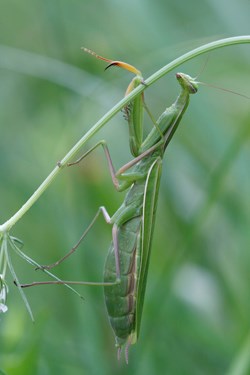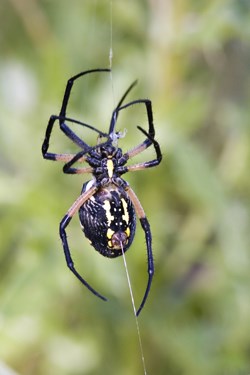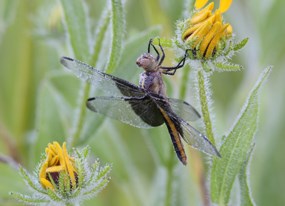
© Jim Schmidt Despite being the most diverse and abundant animals in natural ecosystems, insects and other related invertebrates (e.g. spiders, millipedes, etc.) are greatly under appreciated. They have survived on earth for more than 300 million years and may possess the ability to survive for millions more. Insects are vital to the complex cycle of life, furnishing food for other creatures and breaking down natural materials to chemicals and nutrients for recycling into new life. Whirling, buzzing, singing, chewing, vibrating with energy, they are all around us. 
© Jim Schmidt SpidersSpiders (in the Order Araneae) are generalist predators. They play an important role in the food web by stabilizing insect populations and providing an important food source for birds, amphibians, and other small vertebrates. Spiders are very sensitive to small changes in environmental variables and habitat structure. Therefore, spiders are good ecological indicators of contaminants, disturbance, vegetation complexity, and the diversity of other taxa. The Ohio Spider Survey reports that more than 580 spider species have been recorded in Ohio. Several hundred species may reside in the park. ButterfliesButterflies (in the Order Lepidoptera) are important pollinators and are also significant in nutrient recycling, both as consumers and as prey for other species. Many species are restricted to unique ecological conditions, making them valuable indicators of ecosystem quality and change. In 1996 the national park was invited to participate in a long term butterfly monitoring program initiated by the Cleveland Museum of Natural History. After almost 30 years of monitoring, a total of 82 species of butterflies have been recorded along selected transects in the park. The long term project has grown to over 150 transects in all parts of Ohio. 
© Ed Toerek DragonfliesDragonflies (in the Order Odonata) are among the best insect fliers, capable of hovering and even flying backwards. They have four silky transparent wings and huge wrap-around eyes. With names like jewelwing, dancer, rubyspot, damsel, and bluets, dragonflies are considered beneficial insects that feed on mosquitoes, gnats, and flies and are harmless to humans. The biggest threat to dragonflies is the loss of wetland habitats and pollution of streams. Select a Park:Select a Species Category (optional):
Search results will be displayed here.
|
Last updated: July 3, 2024
